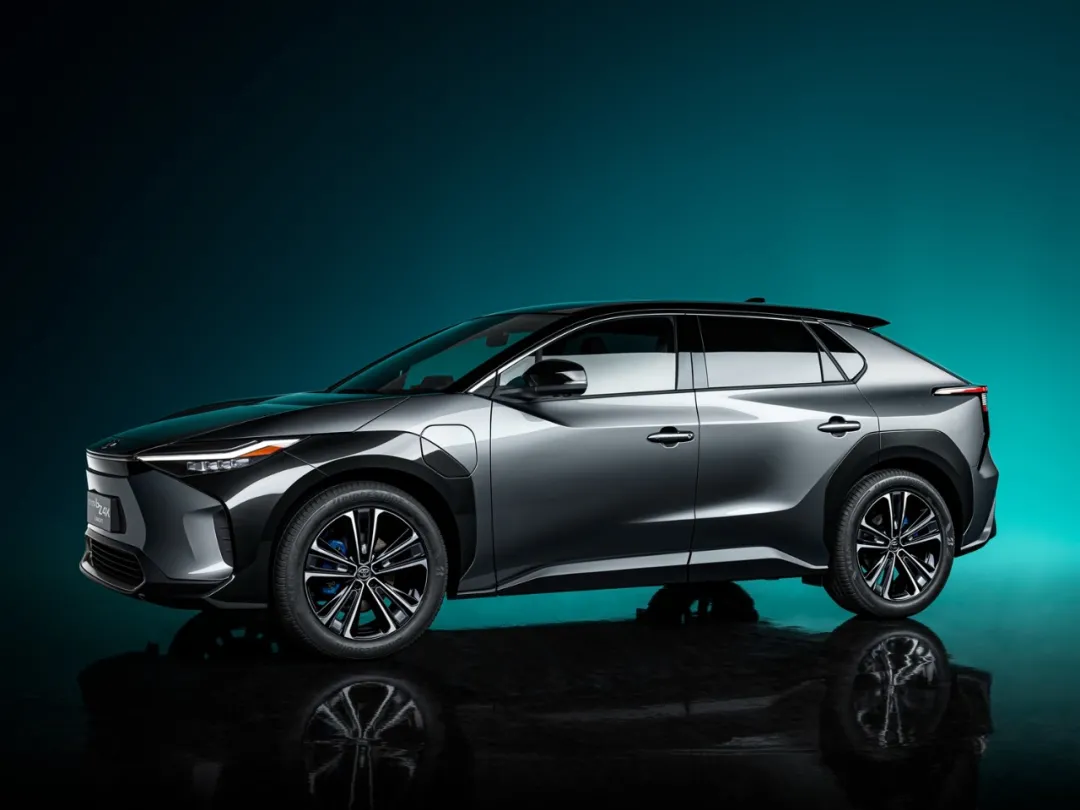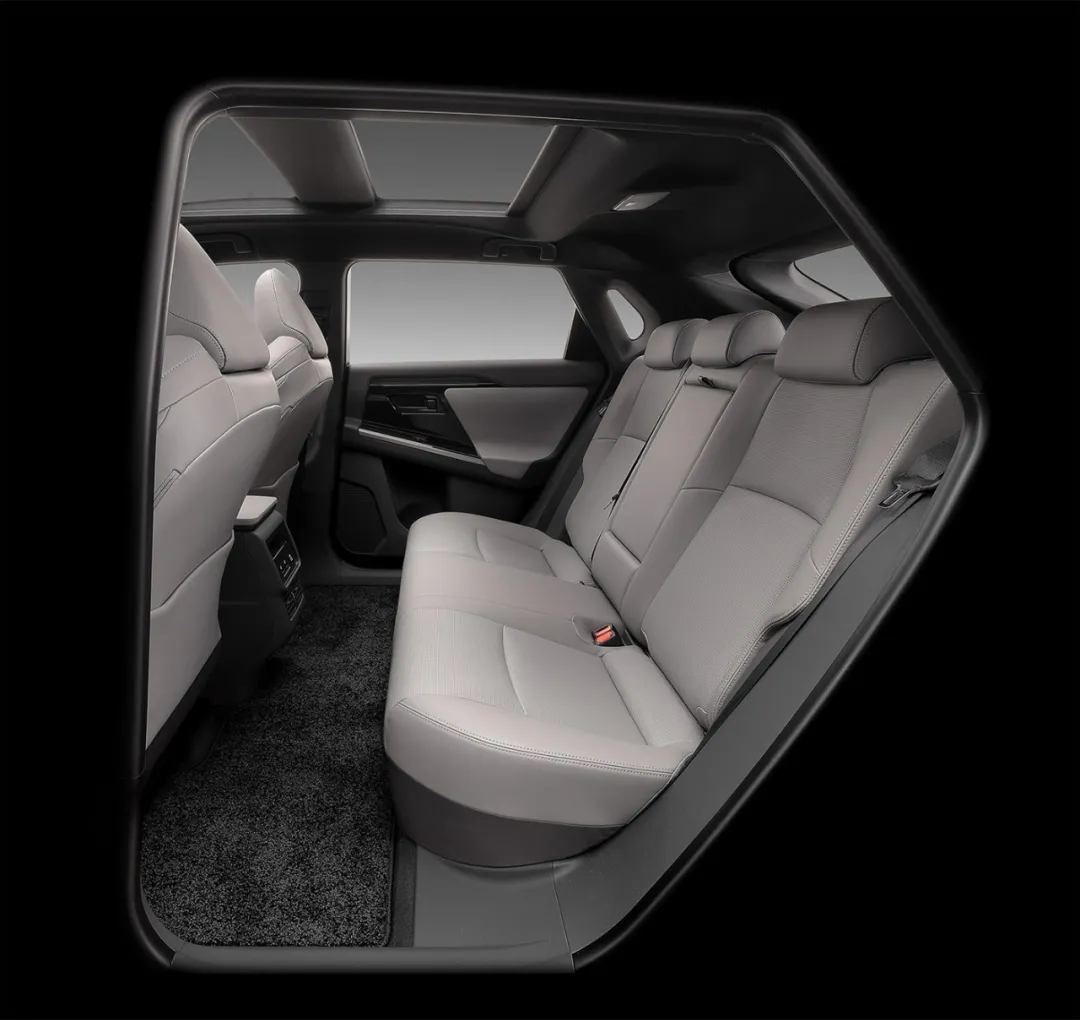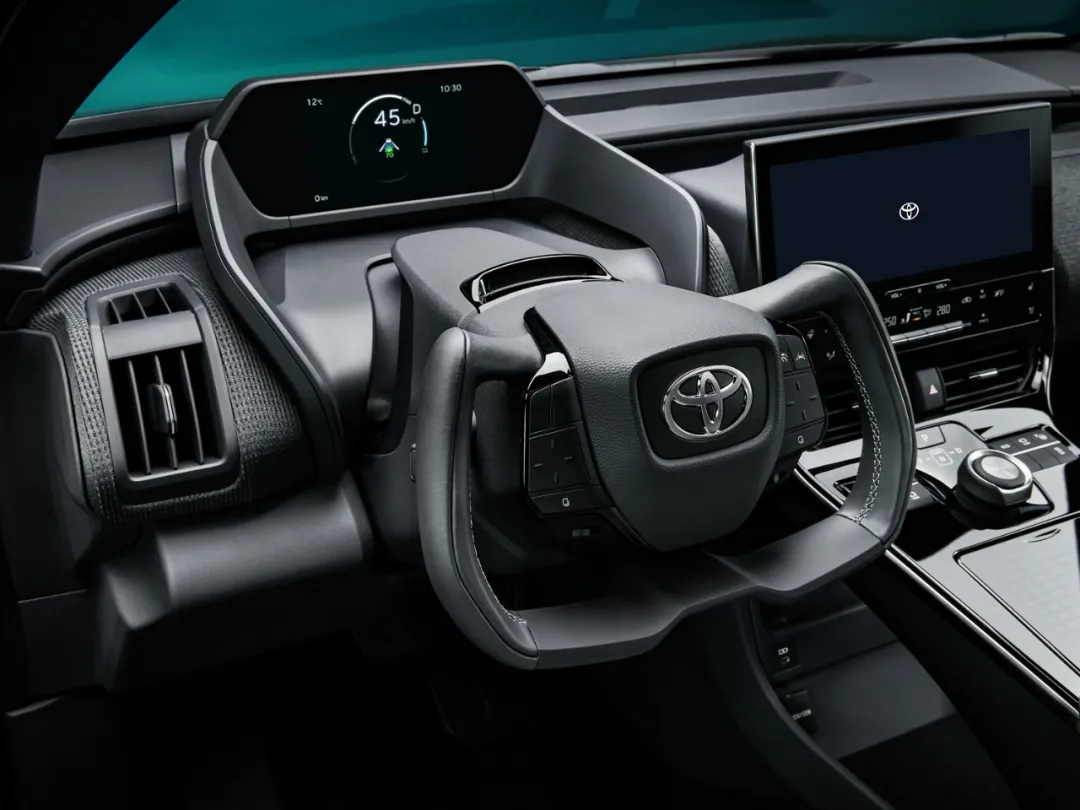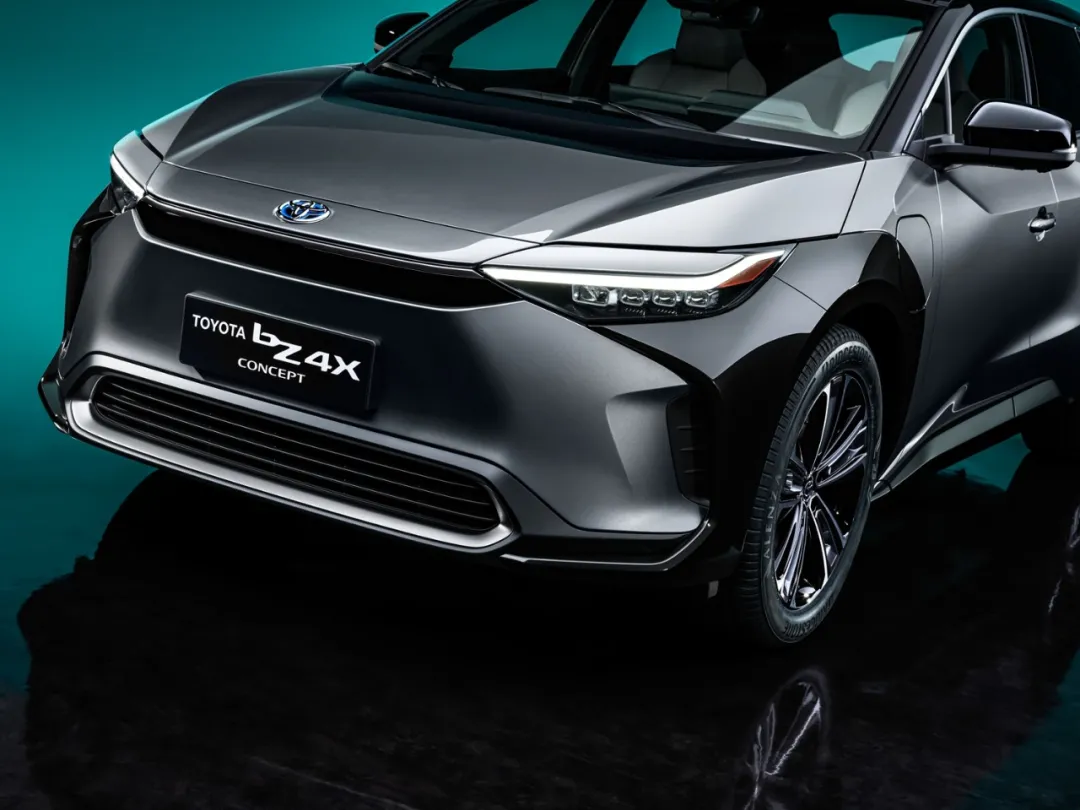Author: Kaijun Qiu & Hui Tian
Early bird gets the worm.
On the eve of Toyota’s explosive growth in global sales of new energy vehicles, the debut of the e-TNGA platform’s first pure electric vehicle bZ4X marked Toyota’s effort on the pure electric vehicle route, beyond hydrogen and hybrid routes.
Before the bZ4X emerged, the competitors in China, USA and Europe had already laid out their plans for the pure electric vehicle market with some achievements, while Toyota, the overlord in the automotive industry, did not make significant moves in the field of pure electric vehicles. Even the most loyal Toyota fans wondered why Toyota was not making a move on pure electric vehicles.
Thus, Toyota was questioned if it could do well in the pure electric vehicle market.
With the launch of the bZ4X, these skeptics will be dispelled.
Although the bZ4X is not very outstanding in terms of product strength, it is still in line with Toyota’s tone, that is, comfortable and practical.
Comfortable: The bZ4X will undoubtedly have a super large space, with a wheelbase of over 2850mm, and the rear passenger space reaches a luxurious 1000mm, reaching the level of a D-class sedan.
Practical: The power is not aggressive, with a maximum output power of 150kW, which is the basic level in the electric vehicle market. The 500km level in WLTC condition does not challenge the gimmick of ultra-long endurance.
However, Toyota is still Toyota, and what is hidden behind the popular parameters is Toyota’s true strength.
The bZ4X can achieve a power battery capacity decay of less than 10% within 10 years, only half of the industry average level, which almost represents the highest industry standard. The new line-control steering system reduces the steering amplitude of the steering wheel within plus or minus 150°, enabling Toyota to layout the weird steering wheel in the electric car. In order to be more low-carbon, energy-saving and increase endurance, the bZ4X will also launch a version equipped with solar cells for on-board electrical appliances.
In addition, it should not be forgotten that the bZ4X is a mass-production vehicle that is 100% faithful to the concept car, which shows that Toyota has already been prepared for related technologies and is just waiting for the right moment.
This year, the global automotive market has undergone significant changes, and electric vehicles have begun to show explosive growth in the markets of China, the United States, and Europe. Toyota, which has brought out the bZ4X, has come at just the right time.
In the fiercely competitive Chinese electric vehicle market, can Toyota turn the tide with a vehicle or do we need to find the answer in the bZ4X product itself? In addition, whether the veteran Toyota can play a new marketing strategy in electric vehicles is worth our attention.
100% Restoration of Concept CarThe mass-produced version of Toyota bZ4X will be identical to the bZ4X concept car.
Having the courage to mass-produce a concept car is commendable. But copying a concept car 100% requires more than just courage to explain.
Toyota unveiled the bZ4X concept car for the first time at the Shanghai Auto Show in April this year. The debut of the bZ concept car was quite low-key in the sea of new energy vehicles at the auto show. However, it is clear that Toyota had prepared the bZ4X long before the Shanghai Auto Show, rather than hastily bringing it out as a show car.

The bZ4X is the first electric vehicle based on the Toyota e-TNGA platform, which is designed specifically for pure electric vehicles.
The bZ4X will feature the pure electric four-wheel drive system jointly developed by Toyota and Subaru. Although Subaru is nominally a subsidiary of Toyota, it is actually the king of the all-wheel drive car market in the fuel vehicle field. Subaru is a multiple-year champion in the European WRC Rally, and has rich historical experience in four-wheel drive system conditions.
Toyota and Subaru jointly created the four-wheel drive system for the bZ4X, which has X-MODE function and is equipped with a new development “Grip-Control intelligent multi-terrain adaptation system”. This improves the handling level of the bZ4X to a new level, with a minimum turning radius of only 5.7 meters, and achieves performance higher than the average.
Another advantage of the bZ4X is its huge interior space. With a length of 4690mm and a wheelbase of 2850mm, the wheelbase is over 60%, thus the rear space is astonishingly 1000mm, and is comparable to a luxury car in the D-class sedan range.

Although the exterior of the Toyota bZ4X still follows a conservative design, it even looks somewhat similar to a fuel vehicle, but its four-wheel drive and chassis parameters prove that the bZ4X is a genuine pure electric vehicle developed on a pure electric platform.
In terms of interior design, the bZ4X is significantly different from traditional vehicle models, as it adopts an irregular-shaped steering wheel design.
Behind the irregular-shaped steering wheel design is Toyota’s introduction of the steer-by-wire system in the bZ4X. It is a technology that will be necessary for the development of intelligent assistant driving towards higher-levels, making the bZ4X’s intelligent assistant ability highly anticipated.
Battery Degradation: No More Than 10% Over 10 Years
The bZ4X has a battery capacity degradation of no more than 10% over 10 years, which is only half of the national standard.This is a technical parameter that is generally not mentioned by most automakers, demonstrating Toyota’s commitment to product reliability and durability. In terms of electric vehicles, battery capacity decay protection is one of them.
The Toyota bZ4X will be equipped with a 71.4 kWh lithium-ion battery pack, with a range of 500 km for the two-wheel-drive version and 460 km for the four-wheel-drive version, both of which were measured under the WLTC standard, which is closer to real-world driving conditions.
Competitive models appear to achieve a NEDC range of around 600 km on a 71.4 kWh battery pack. However, Toyota uses the more realistic WLTC standard for range testing and is relatively conservative, achieving only 500 km. On the one hand, this approach provides more honest and reliable range figures, on the other hand, it may be related to the commitment of the power battery pack decay.
Does Toyota have the ability to achieve such a small decay rate?
In fact, Toyota is the carmaker with the most exploration and practice in the field of power batteries- even hybrid models require power batteries.
It is worth noting that the bZ4X that Toyota will introduce to the Chinese market in the future will be equipped with a battery pack jointly developed by CATL and will be manufactured on a Toyota exclusive production line.
CATL has extensive experience in power decay control and has already developed a zero decay battery that can cross 1,500 cycles on a lithium iron phosphate storage battery. For ternary power batteries, CATL has provided products with a design life of 6 years and 600,000 km for ride-hailing and taxi vehicles that have already been mass-produced and installed on cars. When such a battery is installed on an individual passenger car for nearly 20 years or 200,000 km, the decay control is not beyond 10%, which is not surprising.
In terms of power battery pack design, Toyota has considered not only the issue of decay, but also enhanced protection for the power battery pack. The entire power battery pack uses multiple monitoring of battery voltage, current, and temperature to detect abnormal heat signs and prevent heat generation. In terms of internal battery pack design, the structure of “cooling loop separated from battery unit” is used, and a high-resistance coolant is used to prevent fire caused by a short circuit due to coolant leakage from the battery pack.
The most advanced technology is also found in the bZ4X, which uses a battery pack integrated with the body to ensure the protection performance of the battery pack in the event of a collision.Actually, Toyota has rich experience in the safety of power batteries. Among the cumulative 18 million hybrid, electric, and hydrogen fuel cell vehicles, there has not been a single case of electric shock (leakage), battery combustion, or explosion caused by vehicle accidents.
In addition to focusing on the life and safety of power batteries, the endurance capability is also equally important. The common practice in the industry is to “throttle” on the basis of the established charged amount of power batteries, controlling the electric driving performance or improving the electric driving efficiency. Toyota not only improves the electric driving efficiency but also innovatively adopts solar charging technology. Some bZ4X models can be equipped with a roof solar panel. According to Toyota’s estimation, the annual solar power generation can provide for a driving range of 1800 kilometers, which is a new way to improve endurance mileage in an “open-source” way.
Unique Intelligent Steering Wheel of Unconventional Shape
The steering wheel of the Toyota bZ4X is no longer circular but of an irregular shape resembling that of an F1 racing car.

The change of the steering wheel is only superficial. The core is the line-controlled steering technology adopted by the Toyota bZ4X.
The line-controlled steering system is a steering technology that decouples the steering wheel and tire hardware. By using wire transmission of signals to combine the rotational information of the steering wheel with the wheel turning angle, the manipulation becomes more flexible and is better coordinated with the intelligent driving assist system.
Line-controlled steering technology is not widely used in cars, but it has been extensively applied in civil aviation airplanes and is now a mature and reliable technology.
The advantages brought by line-controlled steering are manifold:
The first one is significantly reducing the driver’s driving burden. The steering wheel turning angle of the bZ4X is only ±150°. When turning around or reversing into a garage, the driver does not need to switch hands to get into position.
The second one is a faster steering response rate. The line-controlled steering system of the bZ4X will transmit signals to the servo mechanism through electrical signals, which is faster. In different driving modes, the response speed and touch feeling can be adjusted.
The third one is the enhancement of collision safety after the cancellation of the traditional mechanical structure, reducing the damage to the driver’s knee during a collision.
The fourth one is a better NVH experience, eliminating the possibility of road vibrations transmitted to the steering wheel.
These advantages are only for the driver. For intelligent driving assistance, line-controlled steering is also one of the future development directions and a necessary infrastructure for advanced intelligent driving assistance systems and autonomous driving.
The Toyota bZ4X is the first to use line-controlled chassis technology, which enables the bZ4X to have the foundation of an advanced intelligent driving assistance system. We can expect that the future bZ4X will bring at least L2-level intelligent driving assistance system functions.
New Direction of Toyota’s Aircraft CarrierThe appearance of bZ4X reflects that Toyota, the aircraft carrier of the automotive industry, has added new direction.
Toyota is a leader in hydrogen fuel cell vehicles and hybrid technology, with over 18 million electrified vehicles globally, and its hydrogen fuel cell sedan has entered its second-generation model. However, Toyota’s product lineup in the pure electric vehicle field is meager. However, the appearance of bZ4X shows us Toyota’s true strength in the pure electric vehicle market.

Masahiko Maeda, Toyota’s executive director and CTO, has stated in media interviews that the bZ series has a total of seven models, and Toyota will choose the best five models for China. According to the plan, by 2025, Toyota and Lexus will have ten EV models in China, and by then, Toyota and Lexus brands will import over 30 electrified vehicles in China, including HEV, PHEV, EV, and FCEV.
Clearly, Toyota’s plan is very ambitious, but their philosophy is clear: environmentally friendly cars are only meaningful when they are widely adopted. The launch of Toyota bZ4X is an important step towards realizing this philosophy.
Currently, Toyota has more than 1,300 dealership networks, and Toyota will undoubtedly make full use of its network advantages to quickly promote bZ4X products to consumers, and provide its traditional peace-of-mind after-sales service policy for consumers to enjoy hassle-free ownership experience.
In addition, Toyota has accumulated over ten million users in China. They have a strong sense of identity with the Toyota brand. After the launch of Toyota’s pure electric products, a group of Toyota loyal fans will surely switch to the electric vehicle market.
However, there is still a possibility at the marketing level. Whether it is Chinese new car makers or traditional European luxury car companies, when entering the Chinese electric vehicle market, they tend to use self-operated models or self-managed franchise models, and no longer adopt the traditional agency sales model that Chinese customers are familiar with.
Toyota’s polishing of bZ4X products and technology strength is believed to receive consumer recognition, but it is still worth looking forward to how Toyota will ultimately promote bZ4X to consumers.
In any case, the launch of bZ4X is enough to prove that Toyota has begun to focus on pure EVs, which is enough to make competitors nervous.
This article is a translation by ChatGPT of a Chinese report from 42HOW. If you have any questions about it, please email bd@42how.com.